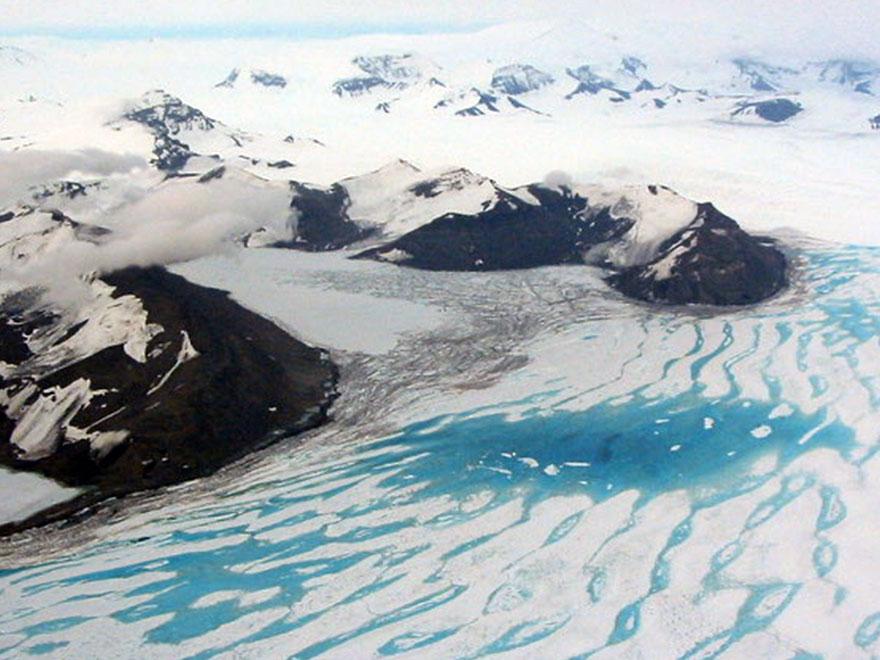A few years ago, we featured a project from CamDo customer DouglasMacAyeal, which featured a time lapse video that monitored an ice shelf in Antarctica tostudy ice shelf stability at McMurdo Station Antarctica.
We recently heard from Douglas thatBlinkX will be used for another project in Antarctica. This time around, the location is the George VI Ice Shelf in Antarctica. They will be monitoring surface lakes that fill and drain as the polar seasons progress, as hundreds form here. They’ll be staying at a station calledFossil Bluff, which is run by the British Antarctic Survey.

Why is this study important? The evolution of surface and shallow subsurface meltwater across Antarctic ice shelves has some pretty major implications for their (in)stability. Understanding ice shelf (in)stability is important because ice shelves buttress against the discharge of inland ice and therefore influence ice-sheet contributions to sea-level rise. Ice-shelf break-up may be triggered by stress variations associated with surface meltwater movement, ponding, and drainage. These variations may cause an ice shelf to flex and fracture. The goal of this four-year study is to provide key geophysical observations to improve understanding of ice-shelf meltwater and its effects on (in)stability.
It goes without saying: we’re thrilled to be a part of this important research.

The Kit
The BlinkX kit will be modified to handle the extreme, specific conditions that this shoot requires. For weather- and waterproofing, everything will be encased in 3M 5200 marine sealant/adhesive and will use a combination of bicycle tire inner tubes and cable exits to protect the BlinkX and GoPro camera from the elements. He plans to glue the USB connections both into the camera, making the connection permanent. This will necessitate using the battery bay to access the SD card when he eventually wants to download the photos. The other ports on the BlinkX will be sealed shut with sealant and covered with a combination of bicycle inner tube and rubber mastic tape. He dubs this modification, “bullet proof cabling”.




The Power
The camera will be set up on an automatic weather station and will be powered by a 12-volt AGM battery charged by a 10-watt solar panel and a “quality” charge controller. MacAyeal also mentioned that Lithium Ion batteries don’t work that well unless you are lucky and get them started in warmer weather. He also notes that Lead Acid batteries are the gold standard, but very heavy.
The Schedule
They will be capturing one image per hour for the “polar summer” from September 21 to March 21. They’ll also capture one night photo for a noon-time shot when the sun is down during the polar winter. However, this location has twilight for most of the polar winter, and the sun never rises above the horizon between May 15 to August 10.
With the ability to schedule up to eight schedules via BlinkX, the kit will be set to take one-hour interval pictures in “photo mode” for the polar “day” (September 21 to March 21) and to take only local solar noon-time photos for the polar “night” (March 21 to September 21) in “night photo mode,” with the night-photo settings on the GoPro camera set to Automatic shutter speed.
“It turns out that you can take night-mode photos in full daylight with this automatic shutter speed, and it goes up to a 2 second exposure, which will allow views of the ice shelf when the sun is in twilight.”
It will be deployed and never touched again for 1-2 years, as sometimes logistics require that years are skipped in the Antarctic. This means that he’s decided to dedicate both the camera and BlinkX to “this one purpose” only, and will set them up to run until failure out on the ice shelf.They will retrieve pictures every year via swapping the SD card, but noted that USB or through the camera’s WiFi is also an option.

Typically, we hear about projects near- or after completion. In this case, we’re thrilled to hear about this before the first shot is taken. This project is putting BlinkX in one of the most extreme environments out there, and we love following along. We’ll continually check-in with MacAyeal and will update the progress here on our blog of this fascinating project.



